Looking for the best full-frame camera you can buy? Whether you're planning to upgrade from your APS-C DSLR or buy your first serious camera, there's never been a better time to be in the market for a full-frame companion. Luckily, we've condensed all of our rigorous testing of the latest models to bring you this guide to the best full-frame cameras you can buy right now.
Before we run through our favorites, it's worth stepping back and explaining how full-frame cameras differ from alternatives like APS-C models. The main difference is that their sensors are much larger than the ones found in APS-C, Micro Four Thirds and compact cameras. This means there's room for larger pixels, which can gather more light and help improve image quality at higher ISO sensitivities.
Not long ago, full-frame cameras were almost exclusively the preserve of pro photographers, and were nearly all made by Canon and Nikon. But their appeal is now much broader thanks to the arrival of full-frame mirrorless cameras, which lack the 'mirror' of their DSLR siblings and include features like autofocus right across their frame.
This has sparked huge competition among the major manufacturers, which now includes Sony and Panasonic, alongside a resurgent Canon and Nikon. Canon has, in particular, made a big splash by the launching the Canon EOS R5 and EOS R6, two models that fully announce its arrival on the full-frame mirrorless stage.
We're yet to test those cameras, but we'll be updating this guide with those models soon (if they prove worthy of a space). The fast pace of change in the full-frame market means there's great value to be found in models that are only a year old, including the Canon EOS RP and Sony A7 III below.
What's the best overall full-frame camera you can buy right now? Right now, our current top pick is still the Nikon Z6, a mirrorless model that combines excellent performance and plenty of features in a light body that handles well. It’s also pretty stellar for video and the price is very reasonable considering the features it offers.
That said, new models like the Canon EOS R6 are en route to shake things up, and there might well be another model that's better suited to your budget and shooting needs. So read on to find out the best full-frame cameras you can buy right now, whatever your expectations or level of experience.
Best full-frame cameras 2020 at a glance:
- Nikon Z6
- Sony Alpha A7 III
- Sony Alpha A7R IV
- Sony A7S III
- Nikon D780
- Nikon Z7
- Canon EOS RP
- Panasonic S1R
- Nikon D850
- Sony A9 II
- Canon EOS 5D Mark IV

Best full-frame cameras in 2020:
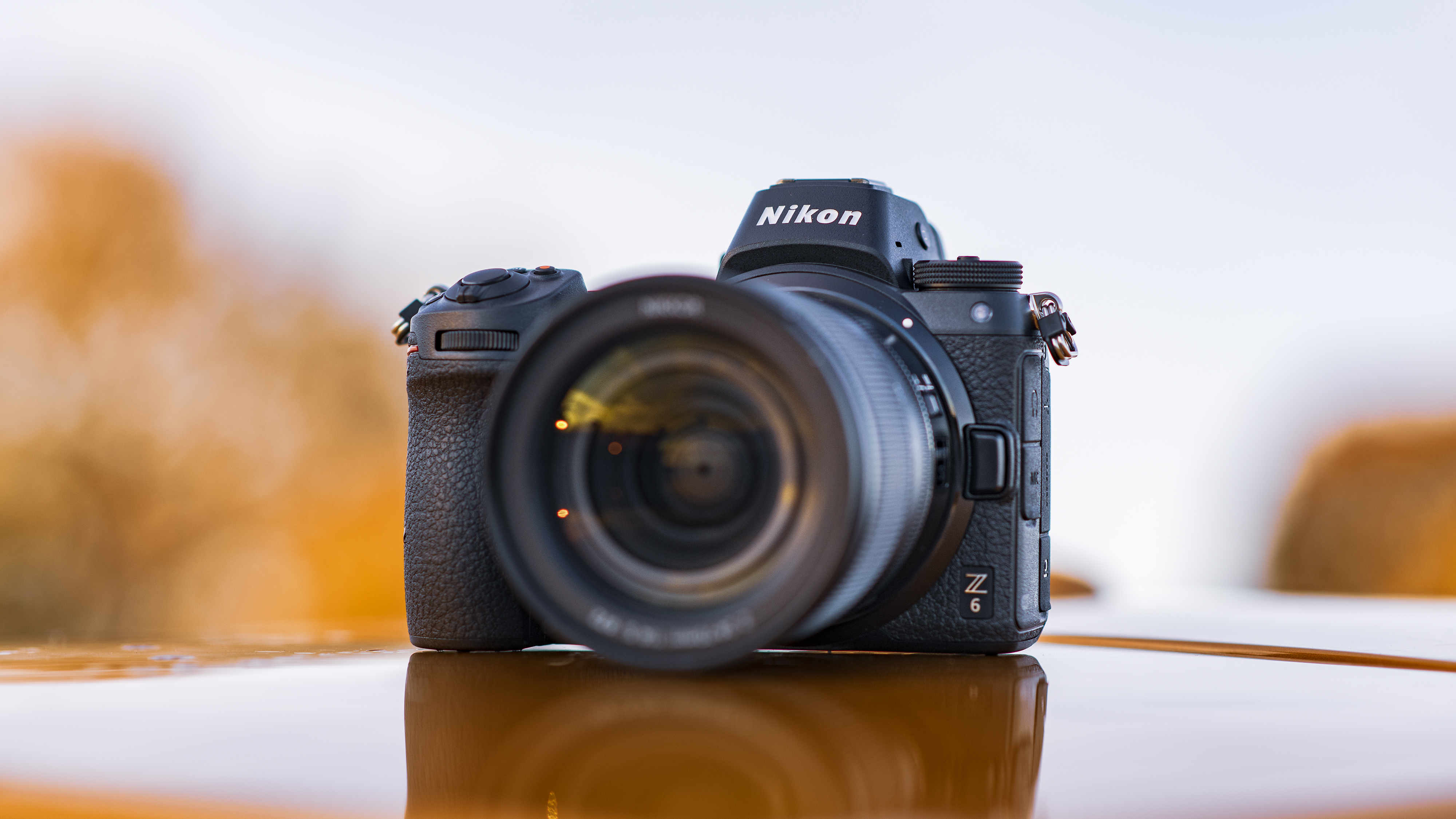
1. Nikon Z6
All the goodness of Nikon's DSLRs and a heap of extra tech on top
Sensor: Full-frame CMOS | Megapixels: 24.5MP | Autofocus: 273-point AF | Screen type: 3.0-inch tilt-angle touchscreen, 2,100K dots | Maximum continuous shooting speed: 12fps | Movies: 4K at 30p | User level: Enthusiast/expert
Nikon's Z6 was the first of two cameras in Nikon's Z system, and while it's no longer the newest model around, it retains its spot at the top of our best full-frame camera list. It's our pick thanks to a brilliant blend of features, performance, handling and price: the 24.5MP sensor delivers beautiful results with great color reproduction and fine detail, while the 273-point AF system works very well and has excellent frame coverage. There's also an impressive 12fps burst shooting mode, sensibly laid-out controls, and a large, bright electronic viewfinder. Existing Nikon user? The FTZ adapter means you'll be able to use your existing F mount lenses too (though check compatibility for older lenses). All this makes the Z6 a brilliant choice for the enthusiast photographer or pro photographer looking for a second body. We can't wait to see where this system goes from here.
- Read our in-depth Nikon Z6 review

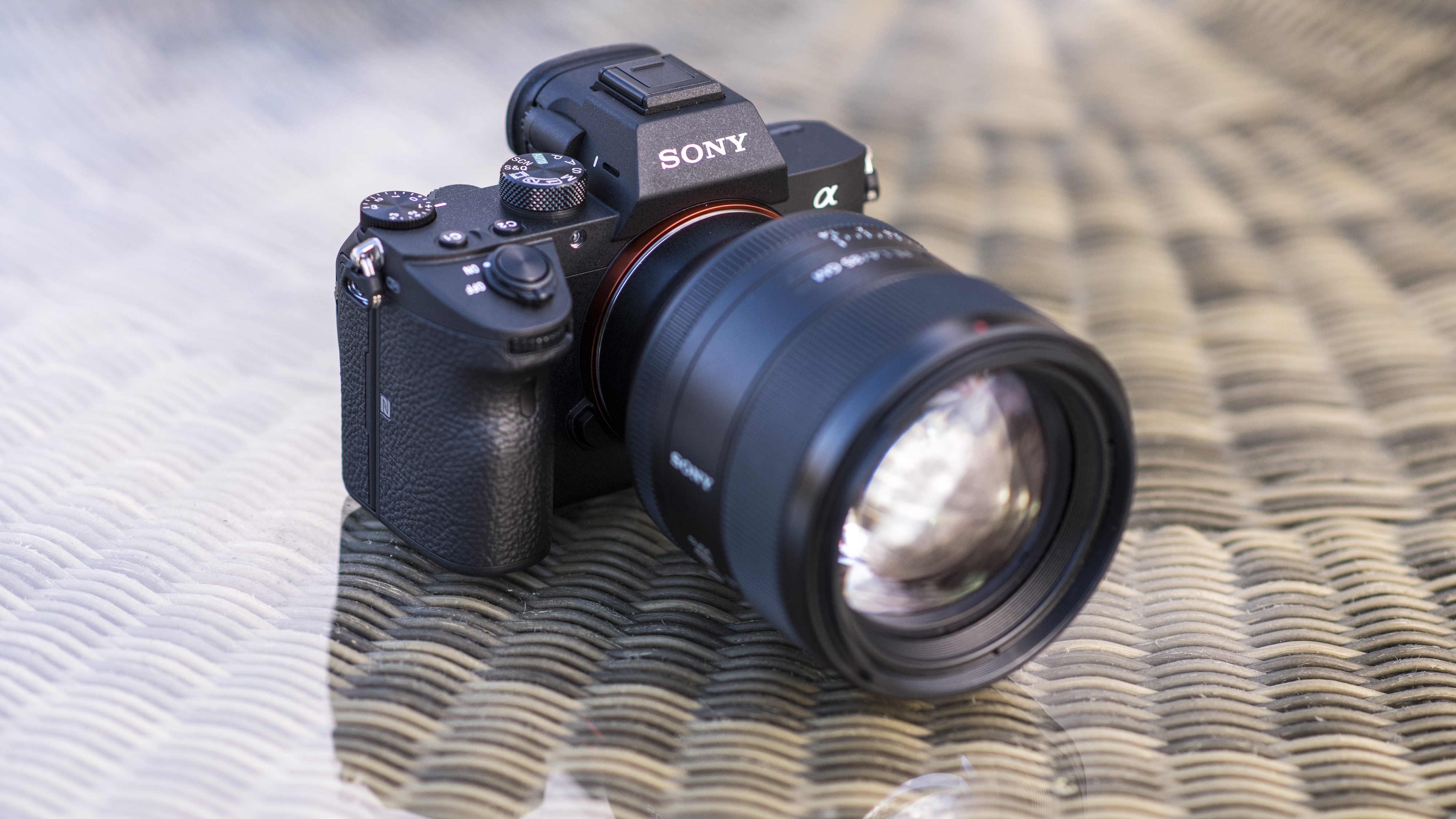
2. Sony A7 III
One of the best full-frame cameras for the price
Sensor size: Full-frame CMOS | Megapixels: 24.2MP | Autofocus: 693-point AF | Screen type: 3.0-inch tilt-angle touchscreen, 921,000 dots | Maximum continuous shooting speed: 10fps | Movies: 4K | User level: Enthusiast/expert
The A7 III has become a firm favourite among enthusiasts and pros these last couple of years, and for good reason. In contrast to the more niche A7R IV and A7S II, the A7 III is a camera for everyone, whether they shoot stills or videos, action or static subjects, indoors or out. The sensor has a modest 24MP but its backlit design makes for better light gathering, while the advantage of sensor-based stabilization means you don't need to worry about this being in your lenses, which is something many other mirrorless cameras don't have as standard. Add to that a 710-shot battery life – impressive for a mirrorless camera – a slew of video-specific features and the EyeAF feature for tack-sharp portraits and you have yourself quite some camera.
- Read our in-depth Sony Alpha A7 III review

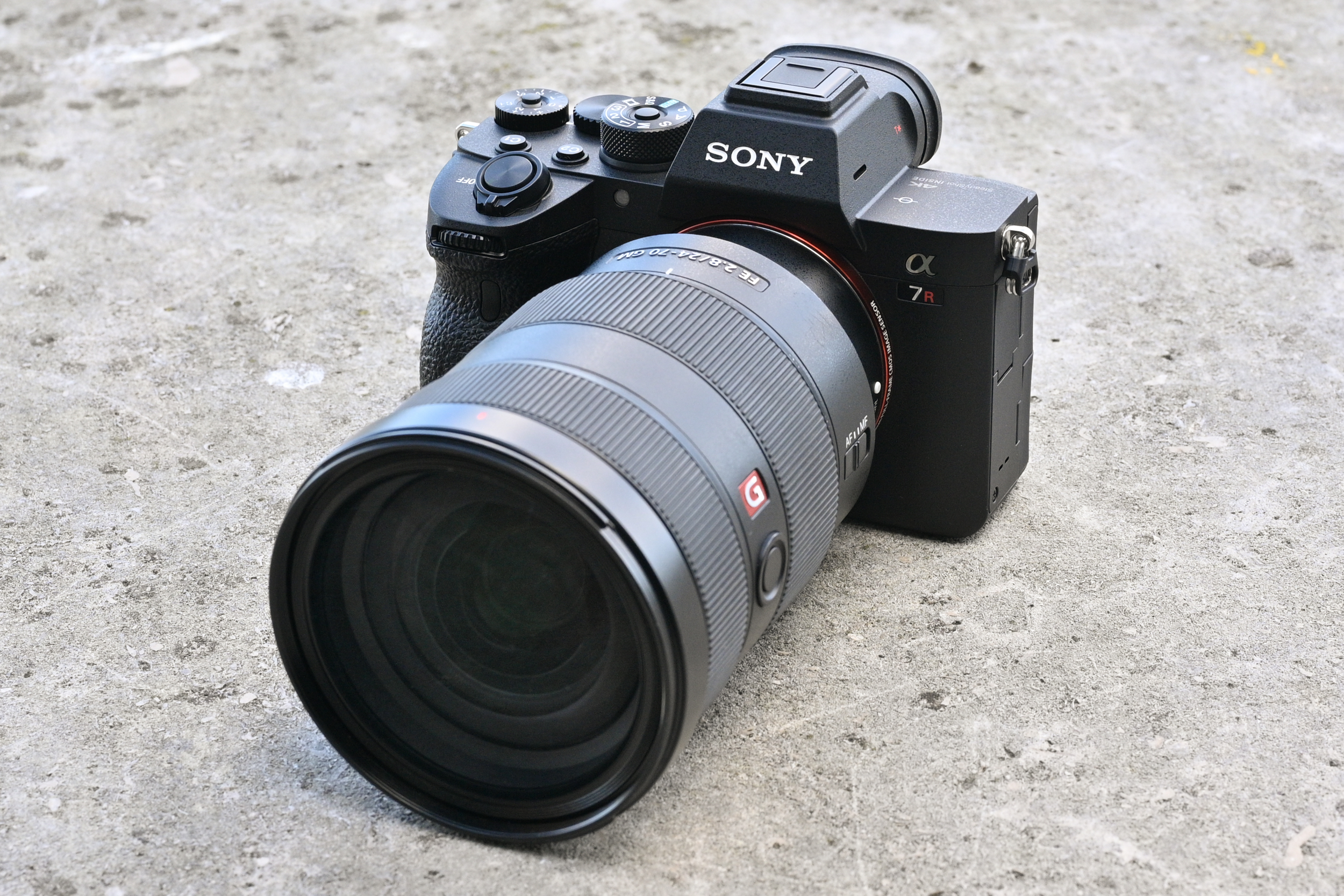
3. Sony A7R IV
An incredible, high-resolution full-frame powerhouse
Sensor: 61MP Full-frame CMOS | Lens: 24-105mm, f/4 (kit) | Monitor: 3.0-inch tilt-angle touchscreen, 1,440,000 dots | Viewfinder: EVF | Continuous shooting: 10fps | Movies: 4K 30fps | User level: Expert
The A7R IV is the studio-friendly camera in Sony’s full-frame line-up, albeit one that's just as at home shooting action or landscapes. It has an extremely high resolution 61-megapixel sensor, up from 42.4 megapixels in the last version. Such a high pixel count lets the camera retrieve incredible amounts of detail when mounted to a sturdy tripod, in controlled lighting. Noise predictably creeps in more quickly than in a lower-resolution full-frame model, but this is an excellent all-round camera. And while it demands careful shooting for the best results, effective stabilization means it still works well handheld. 4K video quality is great too, aside from some rolling shutter effect.
- Read our in-depth Sony Alpha A7R IV review

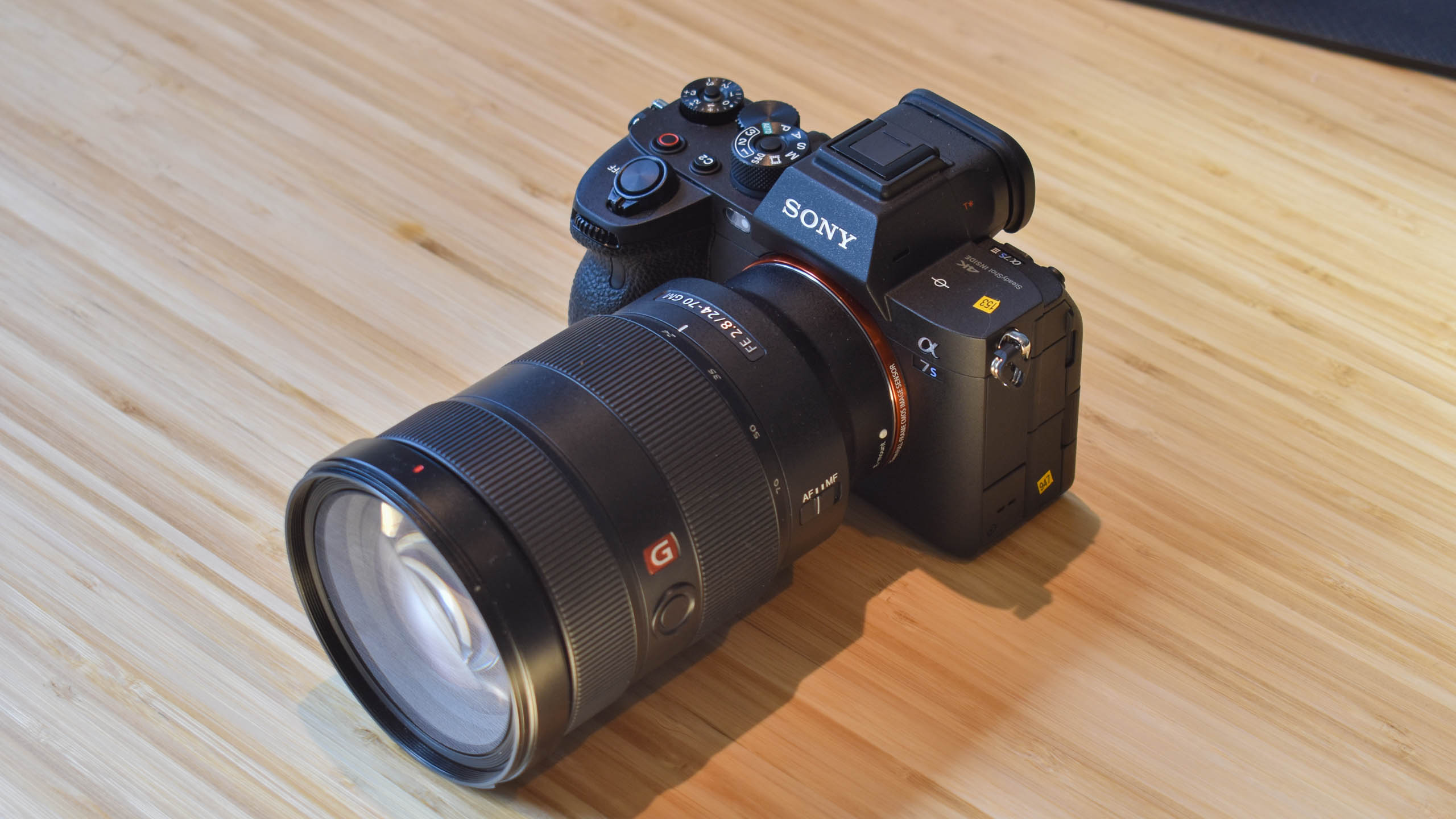
4. Sony A7S III
The new king of 4K video and low light shooting
Sensor: 12MP Full-frame CMOS | Monitor: 3.0-inch vari-angle touchscreen, 1.44m-dots | Viewfinder: 9.44m-dot EVF | Continuous shooting: 10fps | Movies: 4K (up to 120p) | User level: Expert
It was a long time coming, but the Sony A7S III was well worth the wait for video shooters. A complete overhaul of its predecessor, this video-focused full-framer brings a new articulating touchscreen, touch interface, full-sized HDMI port and improved in-body image stabilization. Perhaps most importantly, the combination of a new back-illuminated 12.1MP full-frame sensor and Bionz XR processor delivers hugely impressive image quality, particularly at high ISOs, plus a powerful autofocus system that gives you more granular control than before. Yes, that 12.1MP resolution is a touch on the low side for stills shooters, but the A7S III certainly shouldn't be discounted as a hybrid camera, particularly if you mainly take photos for social media or thumbnails for your video content.
- Read our in-depth Sony A7S III review

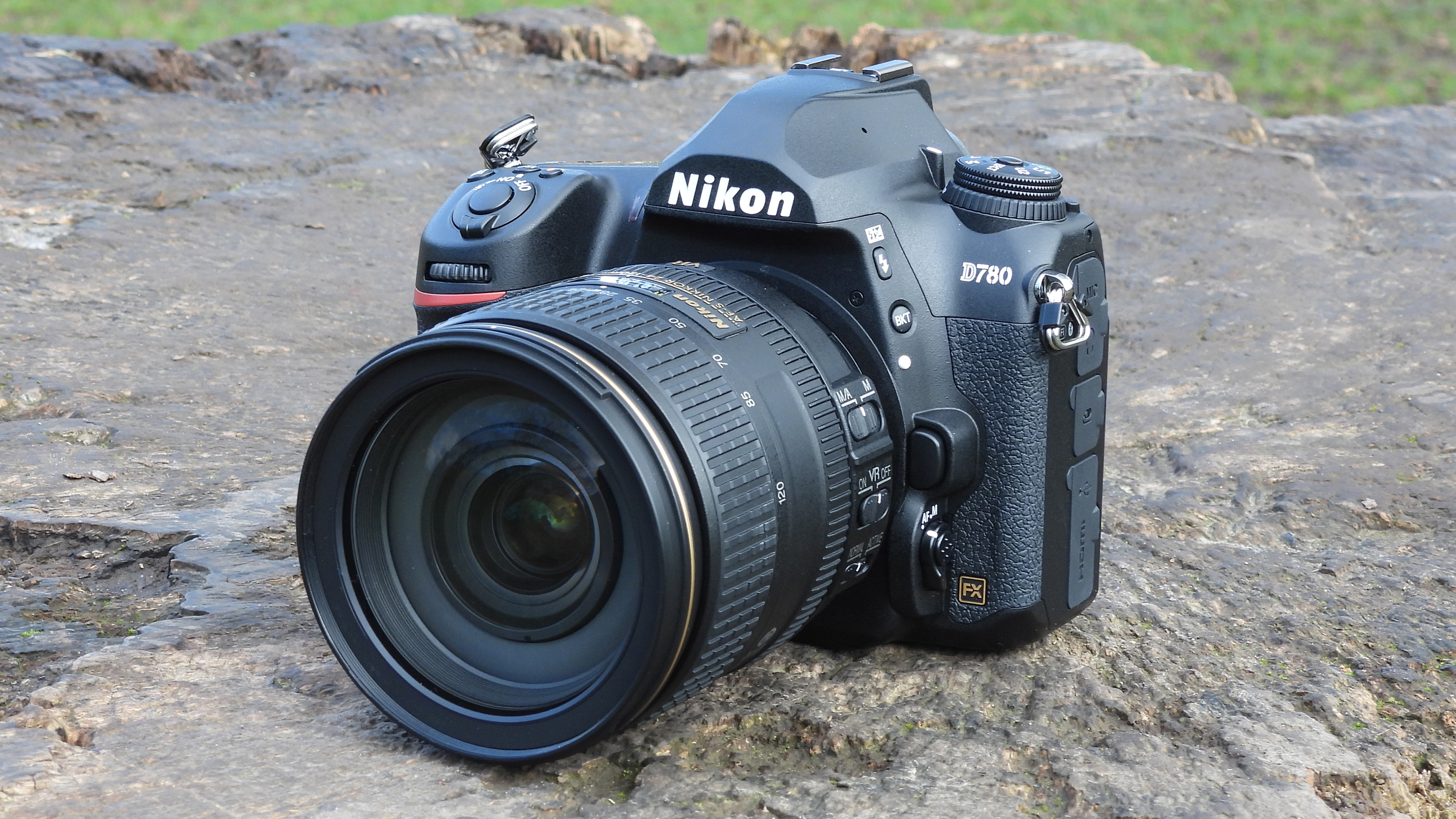
5. Nikon D780
A superb mix of DSLR and mirrorless powers
Sensor: Full-frame CMOS | Megapixels: 24.5MP | Autofocus: 51-point AF | Screen type: 3.2-inch tilt-angle touchscreen, 2,359K dots | Maximum continuous shooting speed: 12fps | Movies: 4K at 30p | User level: Intermediate
Don’t believe the naysayers: the DSLR isn’t dead and the Nikon D780 proves it. One of the best full-frame cameras you can buy, it delivers a fantastic shooting experience that should appeal to fans of DSLR handling, while also offering many modern features familiar to mirrorless users. Its sturdy, water-resistant magnesium alloy body might be big and heavy, but the trade-off is a satisfyingly chunky grip. Image quality from the D780’s full-from 24.5MP sensor is truly fantastic, too, aided by Nikon’s EXPEED 6 image processor. Exposures are nicely balanced, courtesy of a metering and scene recognition system borrowed from the D850, while the 273-point on-chip phase detection system – as used by the mirrorless Z6 – ensures fast and reliable autofocus performance when using Live View on the tilting touchscreen. The lack of in-body image stabilization is a shame, but superlative battery life rounds out what is a superb – if pricey – full-frame all-rounder.
- Read our in-depth Nikon D780 review

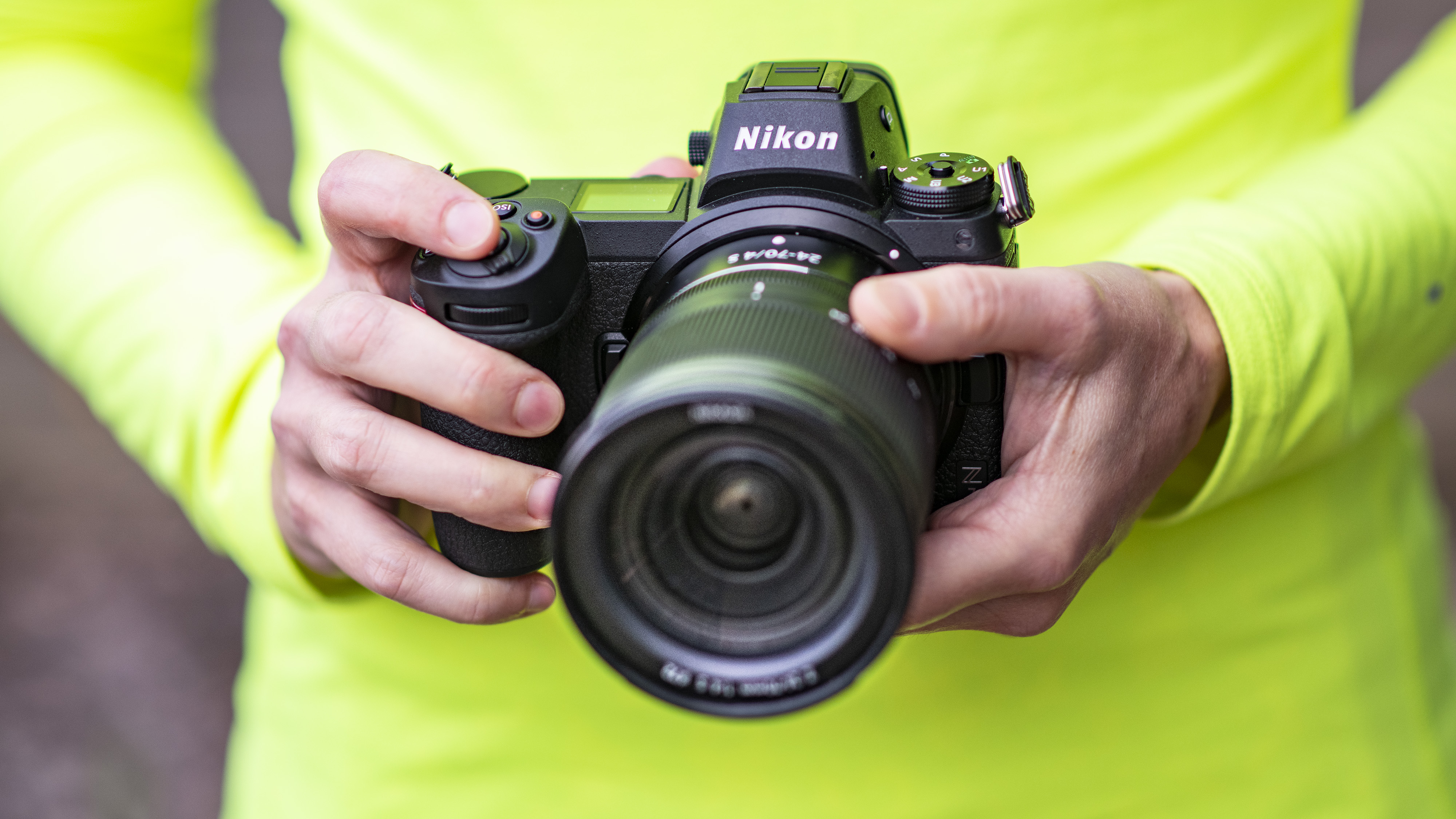
6. Nikon Z7
The more senior Z-system option adds a whole lot of pixels
Sensor size: Full-frame CMOS | Megapixels: 45.7MP | Autofocus: 493-point AF | Screen type: 3.2-inch tilt-angle touchscreen, 2,100,000 dots | Maximum continuous shooting speed: 9fps | Movies: 4K | User level: Expert
Nikon's first full-frame mirrorless camera along with the Z6, the Z7 is triumph. As a first-generation camera we should expect the odd hiccup, but the Z7 has been crafted with consideration and it behaves far better than we would expect. A solid sensor, combined with effective image stabilization, together with a beautiful EVF, excellent handling, competent AF performance and great response throughout form the bones of what make this camera such a pleasure to use. The fact that Nikon allows you to use F-mount lenses through the FTZ adapter also makes the journey from DSLR to mirrorless relatively painless if you've already built up a collection of lenses. Like what you see but cash is tight? The 24MP Nikon Z6 (position 1) deserves your attention.
- Read our in-depth Nikon Z7 review

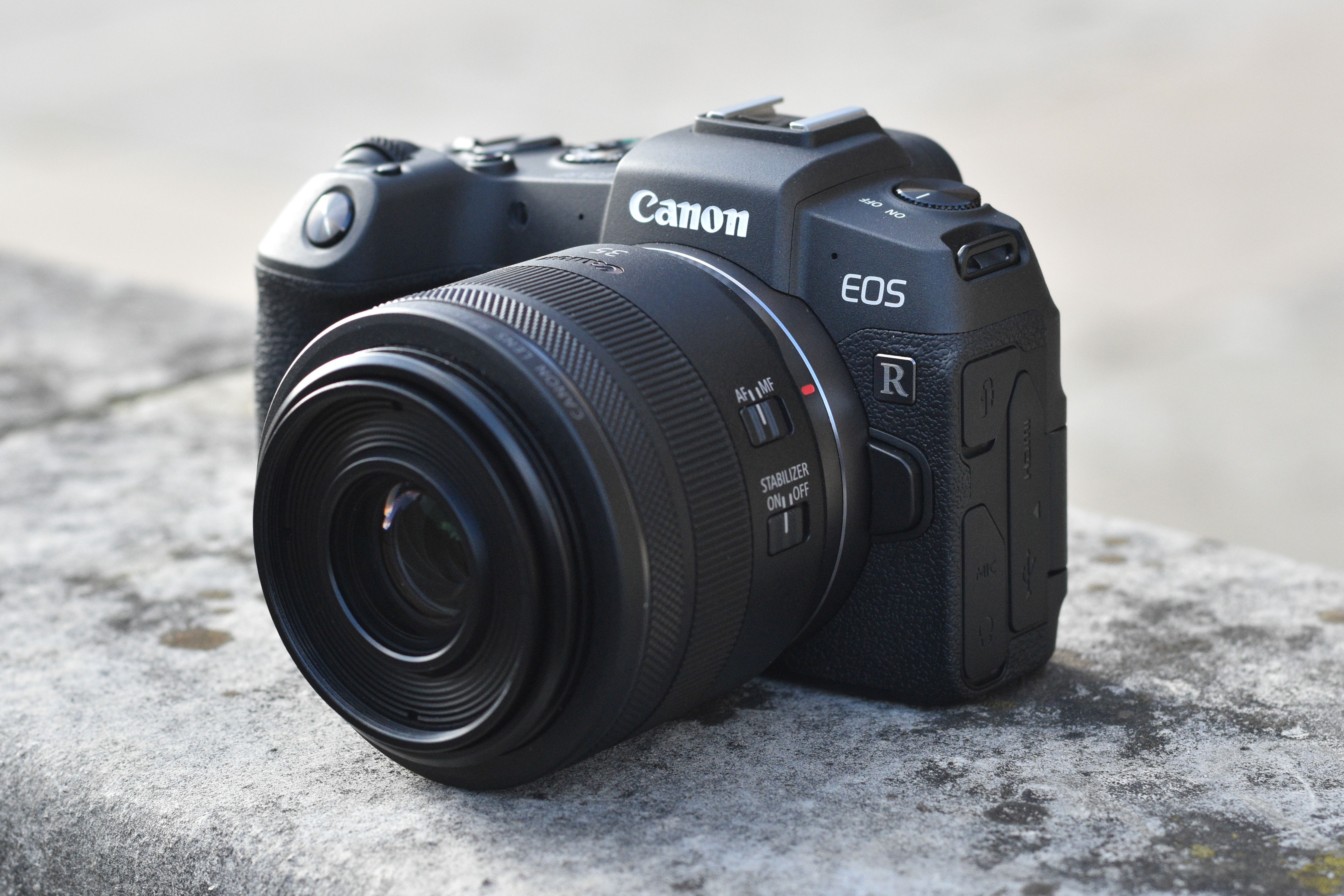
7. Canon EOS RP
Canon's second full-frame mirrorless camera impresses
Sensor: Full-frame CMOS | Megapixels: 26.2MP | Autofocus: 5,655-point AF | Screen type: 3-inch vari-angle touchscreen, 1,040,000 dots | Maximum continuous shooting speed: 5fps | Movies: 4K | User level: Enthusiast
Canon's first full-frame mirrorless camera, the EOS R, delighted in some ways and frustrated in others, but the EOS RP made a much more positive impression. While technically a more junior model and not as fully featured, its much smaller and lighter body, together with a far nicer price, means that it's far more accessible for those who were hoping to make the jump to mirrorless but didn't want to stretch all the way to the EOS R. Without only around 4MP difference between the two you're not really sacrificing much in terms of sensor resolution, while the responsive touchscreen, fast autofocus and deep buffer makes it a pleasure to use in all kinds of situations. Let's hope Canon fills out the lens range with some smaller and more affordable options, as most current options aren't quite the most suitable partners.
- Read our in-depth Canon EOS RP review

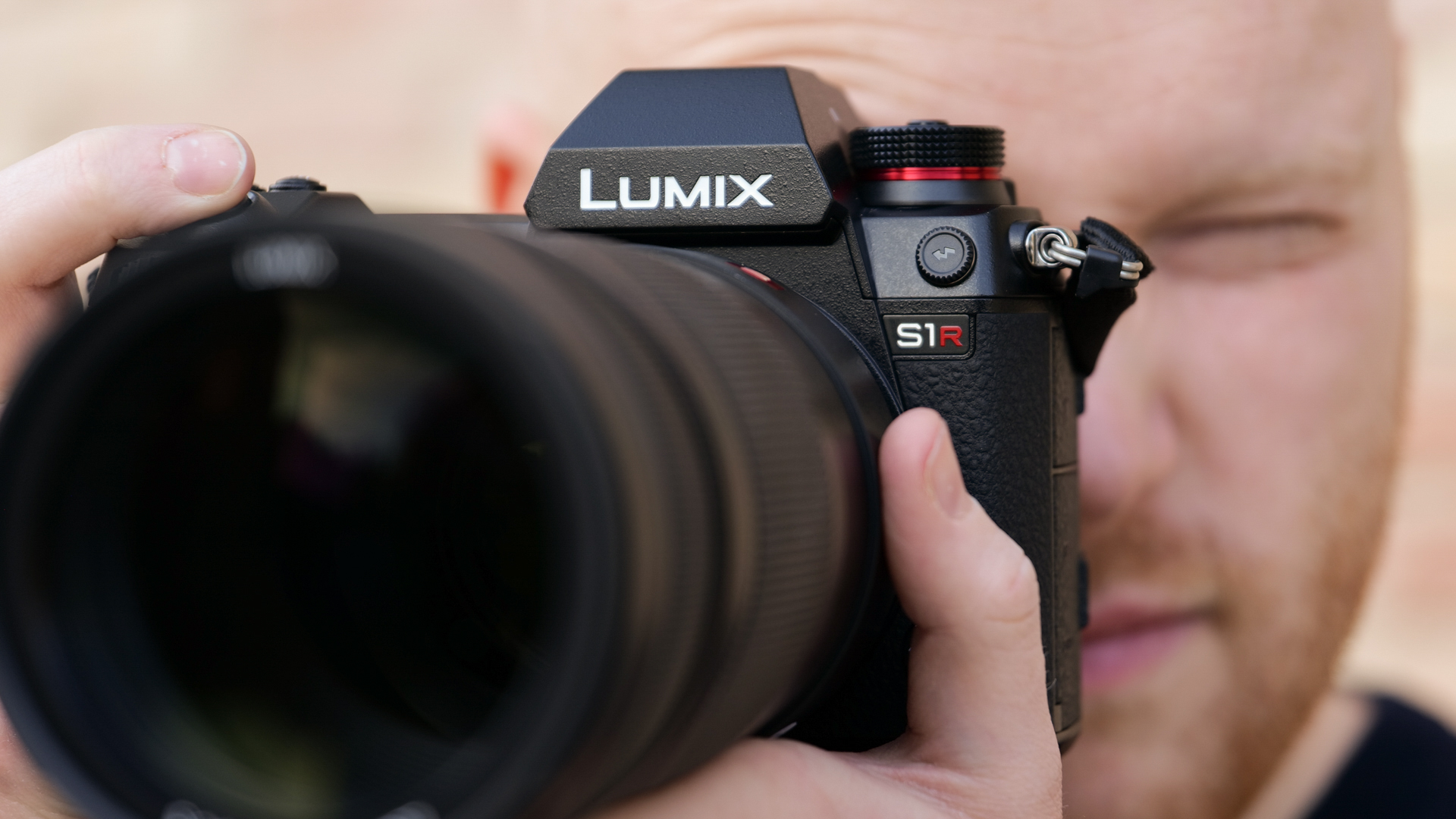
8. Panasonic S1R
Fancy taking 187MP images? The S1R delivers that and plenty more
Sensor size: Full-frame CMOS | Megapixels: 47.3MP | Autofocus: 225-point AF | Screen type: 3.2-inch tilt-angle touchscreen, 2,100,000 dots | Maximum continuous shooting speed: 9fps | Movies: 4K | User level: Expert
The S1R offers some very impressive tech in a supremely rugged body. The 5.7million-dot viewfinder is, without question, the most impressive on the market right now, while stellar video quality, great image stabilisation and a huge buffer all put a big smile on our face too. At the time of its release, the 47.3MP sensor had the highest number of pixels on any full-frame mirrorless camera too, although it's now been beaten by the Sony A7R IV. Its main party trick, however, is the ability to output 187MP images; quite how often you'll need to print your images to the size of a small country is another matter, but this clearly gives you massive scope for extreme cropping, enlargements to all sizes and homing in on the smaller details in the scene. We have some reservations with the autofocus system, and it's a little on the beefy side too, but for its combination of build, features and overall execution, the S1R scores many points.
- Read our in-depth Panasonic S1R review

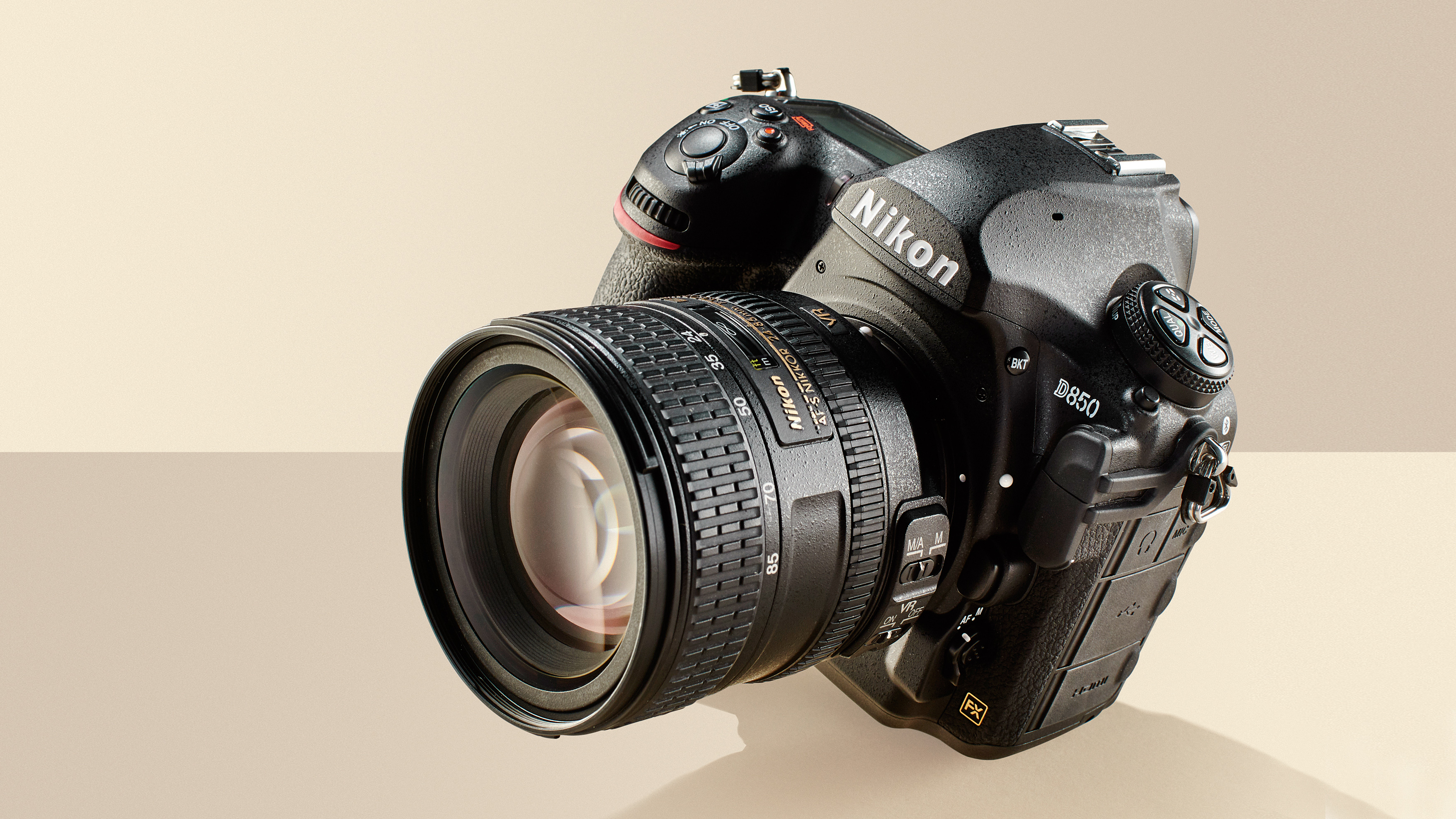
9. Nikon D850
Still a fantastic DSLR for pros
Sensor: Full-frame CMOS | Megapixels: 45.4MP | Autofocus: 153-point AF, 99 cross-type | Screen type: 3.2-inch tilt-angle touchscreen, 2,359,000 dots | Maximum continuous shooting speed: 7fps | Movies: 4K | User level: Expert
The D850 may have had some of its thunder stolen by the similar Z7 (position 3) but it retains a lot of appeal. It's one of the most advanced DSLRs we've ever tested, with the winning combination of a 45MP full-frame sensor and 7fps burst shooting at its heart, and a wonderful 153-point AF system that makes light work of keeping up with moving subjects. Videos are recorded in 4K quality and are top notch, while build and design are as close to perfect as it gets right now. Its weight and size make the Z7 a little more desirable for most users, but if you're shooting sports or other moving subjects and plan on getting the most out of that focusing system, it's a cracking option.
- Read our in-depth Nikon D850 review

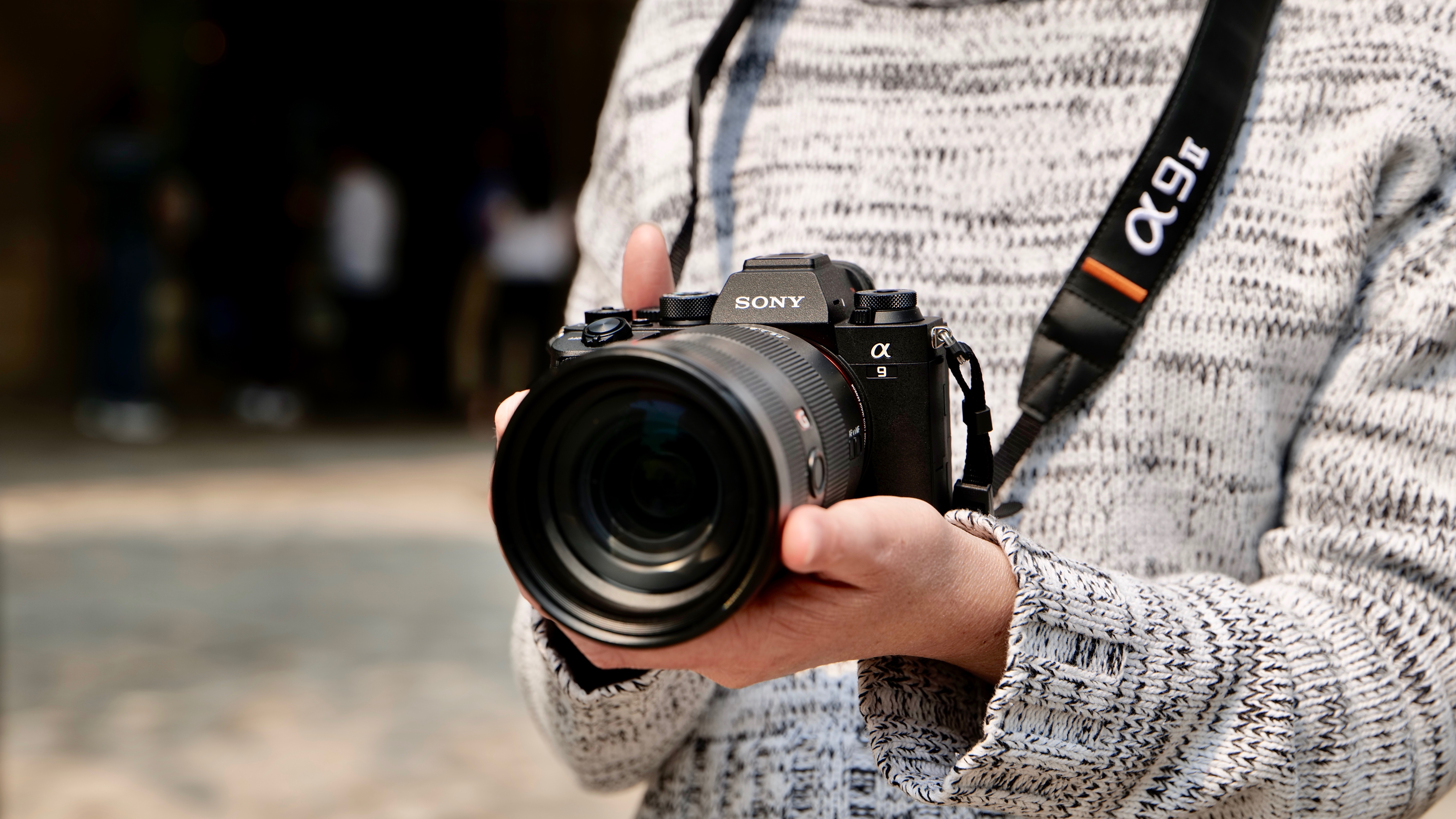
10. Sony A9 II
Hands-down the best mirrorless camera for sports and action
Type: Mirrorless | Sensor: 24.2MP full-frame back-illuminated stacked CMOS | Lens mount: Sony FE | Screen: 3.0-inch tilt-angle touchscreen, 1,440,000 dots | Autofocus: 693-point AF | Video: 4K | Connectivity: Wi-Fi, NFC and Bluetooth | Battery life: 500 shots | Weight: 678g
The main mirrorless rival to the incoming Canon 1DX Mark III and Nikon D6 for pro sports photographers, the Sony A9 II builds on the considerable foundation laid by its predecessor, adding dozens of improvements that collectively make it a one of the best cameras we've tested. The main improvements are its deeper grip and boosted 10fps burst shooting with the mechanical shutter. These are added to the refined 693-point AF system, which now offers even better subject tracking than the original Sony A9 and is perfect for sports and wildlife. It's not cheap, of course, but if you're an action fan, you won't find a better mirrorless camera than this.
- Read our in-depth Sony Alpha A9 II review

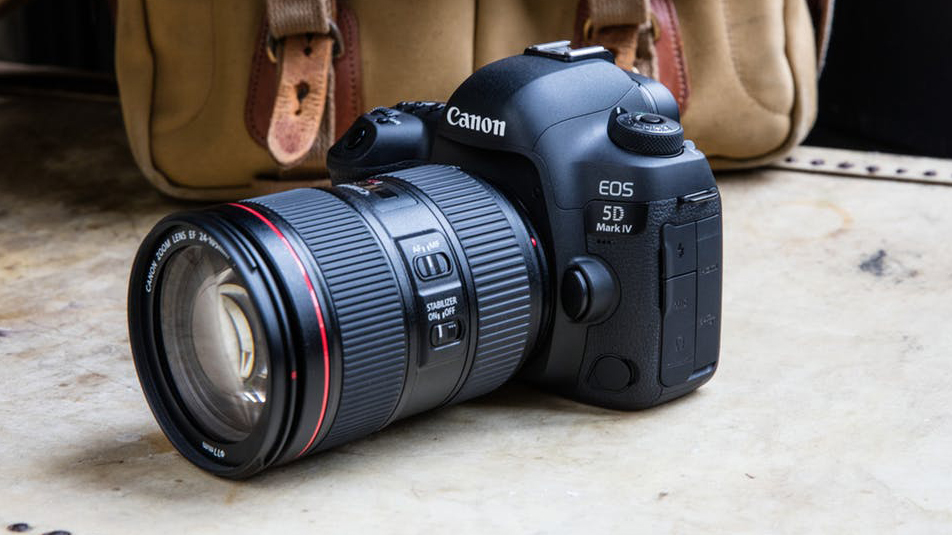
11. Canon EOS 5D Mark IV
Still one of the most capable DSLRs we've seen
Sensor: Full-frame CMOS | Megapixels: 30.4MP | Autofocus: 61-point AF, 41 cross-type | Screen type: 3.2-inch touchscreen, 1,620,000 dots | Maximum continuous shooting speed: 7fps | Movies: 4K | User level: Expert
The EOS 5D Mark IV pretty much tweaks and improves everything the Mark III offered. This includes a brilliant 30.4MP sensor that delivers pin-sharp results, together with an advanced and sophisticated 61-point AF system, a pro-spec performance, 4K video and some very polished handling. We have a few reservations, such as the crop factor and inefficient Motion JPEG option when shooting 4K videos, while the 30MP sensor resolution and 7fps burst rate aren't as competitive at this price point as they used to be when the camera was first launched. Still, if you're a Canon user looking for the very best DSLR for a wide range of purposes, this is still very much it.
- Read our in-depth Canon EOS 5D Mark IV review

Also consider...
Looking for something a bit cheaper? Here's a great value full-frame option:
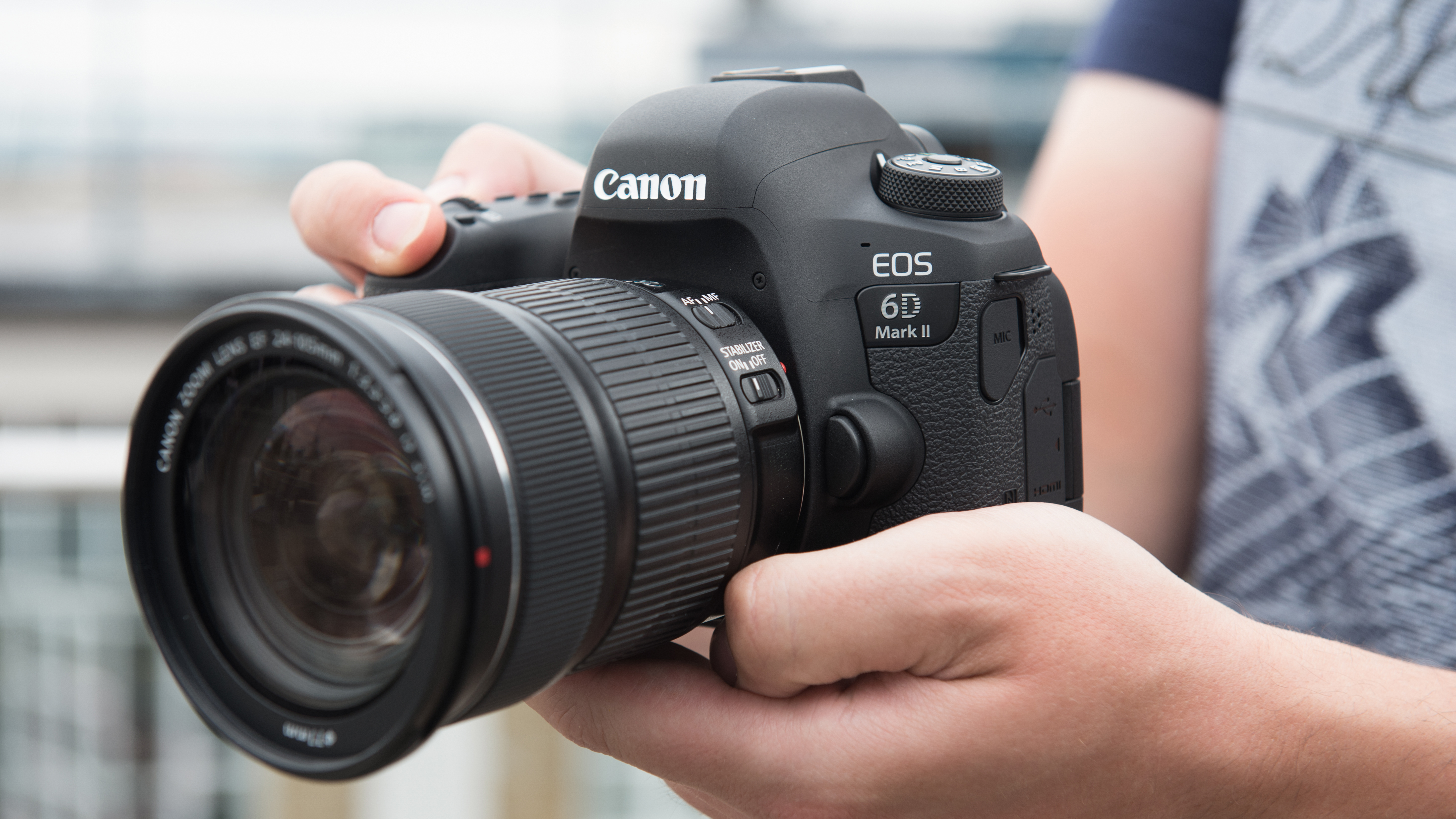
Great value option: Canon EOS 6D Mark II
A top full-frame option if you're on a budget
Sensor: Full-frame CMOS | Megapixels: 26.2MP | Autofocus: 45-point AF | Screen type: 3.0-inch vari-angle touchscreen, 1,040K dots | Maximum continuous shooting speed: 6.5fps | Movies: Full HD at 60p | User level: Intermediate/expert
When the original EOS 6D launched, it offered the best bang for your buck and that trend continues with the second generation DSLR – the EOS 6D Mark II still offers an an excellent entry into the full-frame market. Released in 2017, it has a significant bump in features over it's predecessor, including a higher sensor resolution at 26.2MP, a better autofocus system with 45 cross-type AF points, 6.5fps burst speed and introduces touchscreen functionality to the 6D line. Performance in the real world is smooth and you won't find much to complain about in terms of image quality. And you get all that for around $1,500 / £1,349 / AU$1,999, which is excellent value for money. The incoming Canon EOS R6 is its spiritual mirrorless successor, but that will cost $2,499 / £2,499 / AU$4,499 when it goes on sale later this year.
- Read our in-depth Canon EOS 6D Mark II review

Not sure whether to buy a DSLR or mirrorless camera? Check out our guide video below.

- Best camera
- Best entry-level DSLR
- Best DSLR
- Best mirrorless camera
- Best 4K camera
- Best compact camera
- What camera should I buy?
- Mirrorless vs DSLR: 10 key differences
- Camera rumors

from TechRadar - All the latest technology news https://ift.tt/2NN8U4V
